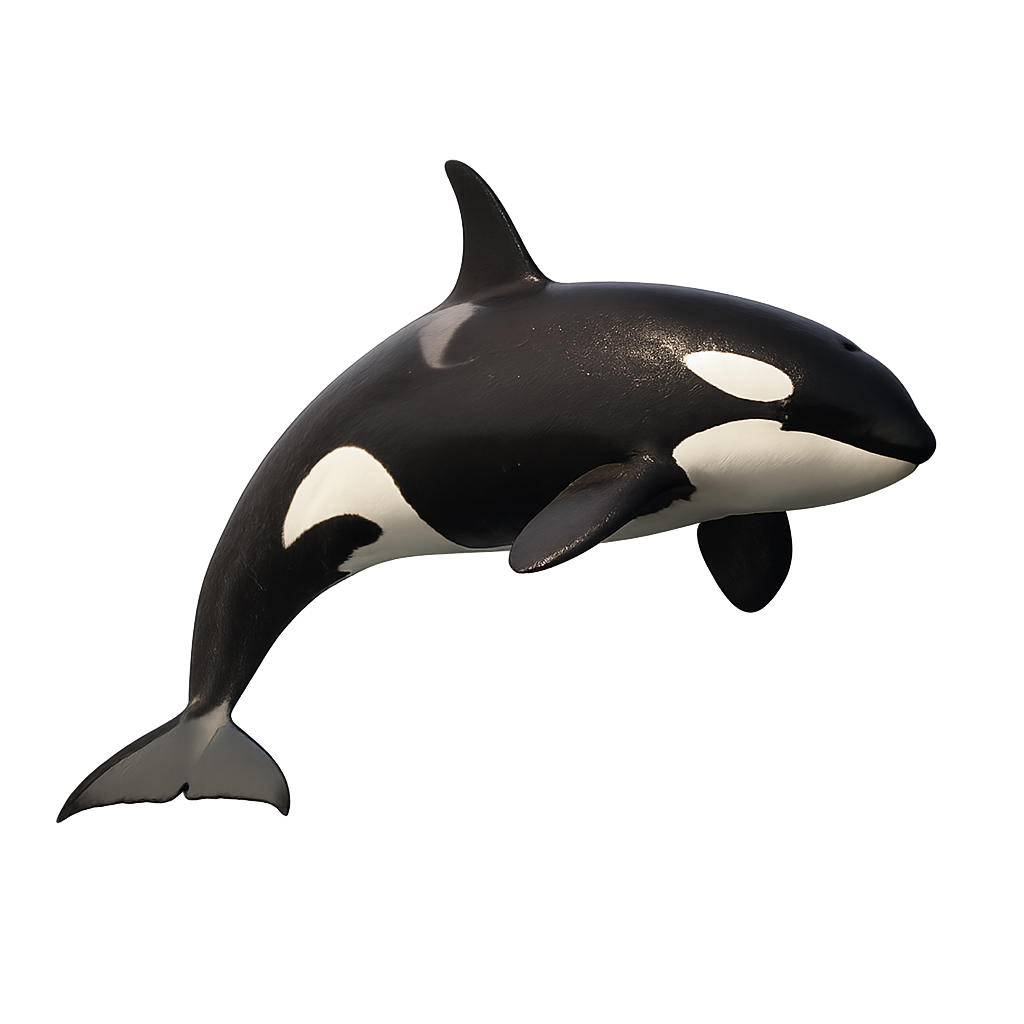Your wildlife photography guide.
Explore the orca in detail, study its behavior, prepare your shots.
Where to observe and photograph the orca in the wild
Learn where and when to spot the orca in the wild, how to identify the species based on distinctive features, and what natural environments it inhabits. The WildlifePhotographer app offers tailored photography tips that reflect the orca’s behavior, helping you capture better wildlife images. Explore the full species profile for key information including description, habitat, active periods, and approach techniques.
Orca
Scientific name: Orcinus orca

IUCN Status: Least Concern
Family: DELPHINIDAE
Group: Marine mammals
Sensitivity to human approach: Suspicious
Minimum approach distance: 100 m
Reproductive period: October to November
Duration: 15-18 mois
Births: October to November
Habitat:
Oceans, seas, and coasts from the Arctic to the Antarctic, often offshore but also near the shore
Activity period :
Activity varies depending on season, weather, or human pressure.
Identification and description:
The Orca, also known as the "killer whale," is a large cetacean from the dolphin family, measuring between 6 and 8 meters in length and weighing up to 6 tons. It is distinguished by its striking black and white coloration, with white patches around the eyes and on the flanks. The Orca is a top predator in the food chain, primarily feeding on fish, marine mammals, sharks, and sometimes even whales. It lives in social groups called "pods," led by the dominant female, where cooperation and hunting strategies are essential. The Orca is found in all oceans around the world, but it prefers cold and temperate waters. While its population remains relatively stable, the Orca is threatened by pollution, a decline in prey, and human-caused disturbances.
Recommended lens:
400 mm – adjust based on distance, desired framing (portrait or habitat), and approach conditions.
Photography tips:
To photograph orcas, use a telephoto lens to capture their social behaviors or movement at sea. Take photos at sunrise or sunset for images with soft, contrasted lighting. Be discreet and respect the safety distance to avoid disturbing their natural environment, especially when they are hunting or during the breeding season.
The WildlifePhotographer App is coming soon!
Be the first to explore the best nature spots, track rutting seasons, log your observations, and observe more wildlife.
Already 1 431 wildlife lovers subscribed worldwide

